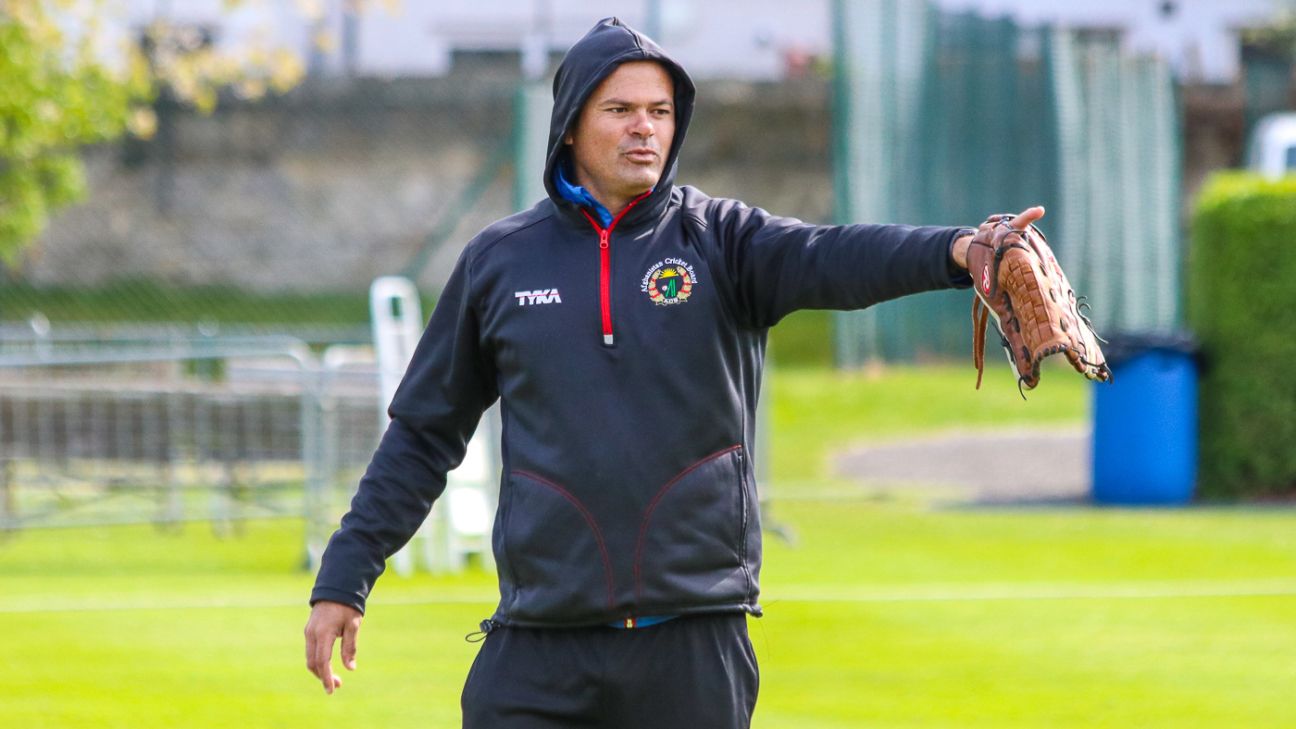
Since 2015, a major part of Bangladesh's success in ODI cricket was because of their ability to take wickets with the new ball. However, since the start of 2019, their main quicks have managed only seven wickets in the first Powerplay, at a strike-rate of 113.14 and a bowling average of 103. This is the first problem their new bowling coach Charl Langeveldt will have to try to fix.
As a function of playing at home a lot, most of the Bangladesh fast bowlers know how to exploit pitches that are slow and partial to spin. The cutter, for example, is Mustafizur Rahman's go-to delivery, and he was able to put it to good use even in England where all 20 of his wickets in the World Cup came after the 30th over. However, for Bangladesh to be a successful bowling unit in all conditions, Langeveldt, who has previously been part of the support staff at South Africa and Afghanistan, said they had to work on their consistency and fitness.
"In all formats you need to be consistent with the new ball," he told ESPNcricinfo. "You need to be able to hit your length consistently, and bowl at least four or five balls in the right area from where you will be able to ask questions. Most of the time at home they will play one or two seamers but when you go to South Africa, New Zealand and Australia, you might have to go with three seamers. I have to identify three fit guys who will bowl consistently in good areas and be aggressive in that length.
"If you want to be the best, you need to be able to be consistent with the new ball. You have to be consistent with the length. [Mustafizur Rahman] is good with change of pace but it is hard with the new ball. The wicket is not gripping at times. For me it is to get the seam position nice and straight. He uses a lot of offcutters into the wicket but for me the key would be able to swing the ball back in to the right-handers, and take it away from the left-handers."
Langeveldt was the South Africa bowling coach in 2017 when they beat Bangladesh 2-0 with the visiting pacers picking up just nine wickets in the entire Test series.
"This is a good challenge for me," he said. "I was coaching the South Africa bowlers couple of years ago when we played against them, and we saw them struggle in foreign conditions. They were struggling with consistency in line and length. It is a thing that can be fixed, and I have to see if it is a technical problem. It will be my challenge."
Langeveldt pointed to the fast bowling revolution taking place in India as proof that teams from the subcontinent can do well abroad. "When you want to play well away from home, you need to have good seamers. India have improved because they play well all over the world. They have good spinners but they also have great seamers. I would like to ensure a few [Bangladesh] seamers come through the system and be able to compete in international cricket."
Langeveldt said that he is the type of bowling coach who likes to be up front with the players, so that he can quickly identify their strengths and weaknesses. "I will go to the bowler first, discuss things with him. What does he think? Then I would try to implement my coaching philosophy on him, and tell him if you want to be the No 1 bowler in the world, this is what you need to do.
"How can I help you? If this is a technical thing, I will definitely help him. But first it is a discussion between me and player, what his shortcomings are, and then we will take it forward from then."















 Phone: (800) 737. 6040
Phone: (800) 737. 6040 Fax: (800) 825 5558
Fax: (800) 825 5558 Website:
Website:  Email:
Email: 






